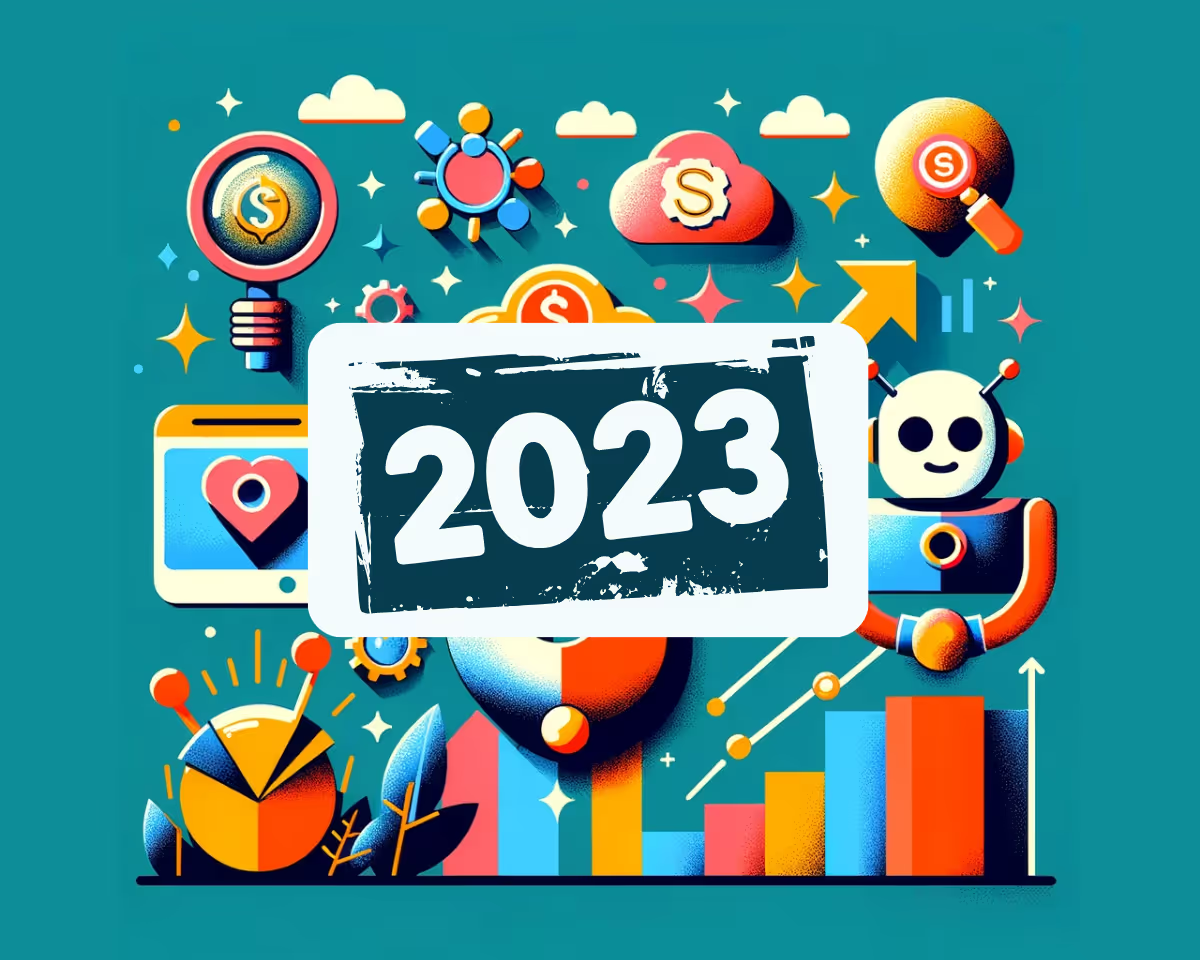Ready to create more pipeline?
Get a demo and discover why thousands of SDR and Sales teams trust LeadIQ to help them build pipeline confidently.



In 2023, B2B sales teams prioritized customer retention and churn reduction due to economic challenges - emphasizing the importance of nurturing existing customer relationships for sustained growth.

The shift to digital-first sales interactions became a major trend, allowing sales teams to reach global markets more efficiently and engage prospects through personalized, multi-channel approaches.

AI played a significant role in transforming B2B sales, helping teams analyze data, personalize outreach, and streamline processes to stay competitive in a complex sales environment.
Get a demo and discover why thousands of SDR and Sales teams trust LeadIQ to help them build pipeline confidently.
It’s hard to believe that another year is winding down. 🤯
But with 2024 on the horizon, we figured now is as good a time as any to look back on 2023 and see what the year meant for B2B sales organizations.
Let’s cut to the chase.
Keep reading to learn about six of the top B2B sales trends impacting organizations in 2023 — which we expect will continue to be important as we move into 2024 and beyond.
To combat a tricky economy, many B2B sales shops are prioritizing customer retention and churn reduction. Since it’s six times more expensive to sell to a new customer than an existing one, businesses are shifting their focus toward nurturing and retaining existing customer relationships. Not only does this help secure a stable revenue stream, it also fosters long-term partnerships, increasing customer loyalty and the likelihood that customers turn into brand advocates and help sell your products via word of mouth.
In an era where customer experience continues to be a key differentiator, B2B sales teams increasingly understand that sustainable growth and profitability depend on maintaining strong, enduring connections with customers and are shifting their focus accordingly.
To align with the evolving preferences and expectations of modern buyers, B2B sales teams are also focused on digital-first sales interactions.
After all, the digital landscape offers unprecedented accessibility, allowing sales teams to reach global markets efficiently. Plus, by using contact tracking capabilities and generative AI email writing tools, sales reps can reach out to the right people at the right time with the right message while personalizing each outreach.
Embracing digital channels facilitates seamless, unintrusive communication, allowing for real-time engagement via emails, video calls, and social media messaging. With decision-makers increasingly relying on online research to make buying decisions, maintaining a robust digital presence enhances visibility and makes your products easier to discover.
The shift to a digital-first approach not only optimizes efficiency but also empowers sales teams to adapt quickly to market changes. As a result, the digital-first approach is a major priority for B2B sales teams aiming for agility, scalability, and sustained success.
Unless you’ve been living under a rock for the last 18 months, you’ve no doubt heard how AI is transforming the business landscape. In response, many leading B2B sales teams are turning to AI to streamline and accelerate their efforts.
For starters, AI can help analyze vast data sets and provide the actionable insights teams need to understand their customers, their preferences, and the overall market. This data-driven approach enables sales teams to enhance lead targeting, optimize sales processes, and make informed decisions about the best way forward.
Perhaps most importantly, sales reps can use AI to personalize outreach at scale, allowing reps to tailor their interactions based on individual customer needs, preferences, or histories, boosting engagement and conversion rates.
As B2B sales become increasingly complex, teams that fail to adapt to the new normal will have a harder time innovating and remaining competitive.
In today’s digital age, it’s getting harder for B2B sales team to generate quality leads due to a confluence of factors.
For starters, contact databases are increasingly harder to maintain due to widespread layoffs and a preponderance of job changes. Lacking accurate data, it’s much harder for sales teams to connect with and engage prospects, which translates into lower win rates.
At the same time, our attention spans are getting shorter, and there’s increased competition in the B2B SaaS space. Since there are only so many hours in the day, it can be difficult to pique the curiosity of a prospect whose attention might be focused elsewhere.
While it’s certainly harder and harder to capture prospects’ attention, you can increase your effectiveness by investing in purpose-built prospecting tools that are designed to maintain accurate B2B contact data. Leading solutions also have contact tracking capabilities that notify you when prospects switch jobs or get promoted, giving reps the perfect opportunity to send personalized messages that resonate.
When the economy is humming along and SaaS companies are scaling rapidly, B2B sales is closer to a walk in the park. Unfortunately, SaaS growth rates have decelerated in recent years. According to one report, new bookings decreased 33% between Q4 of 2022 and Q1 of 2023. This slowdown poses significant challenges for B2B sales teams. Naturally, when the pool of potential customers continues to shrink, it becomes harder and harder to close deals.
Slower growth rates mean sales teams must work harder to differentiate their offerings, showcase their unique value propositions, and otherwise stand out in a crowded marketplace. At the same time, longer sales cycles, tighter budgets, and increased scrutiny on returns on investment are forcing teams to embark on more intricate, bespoke sales approaches.
Navigating these challenges requires B2B sales teams to prioritize customer retention, explore innovative sales tactics (e.g., generative AI email writing tools), and continually refine their value delivery to adapt to the evolving business landscape.
In the post-pandemic world, hybrid sales models are emerging as a leading B2B sales trend. Such models blend traditional and digital sales approaches to meet the needs of modern buyers.
Combining the strengths of in-person interactions and digital engagement, hybrid models provide the flexibility and adaptability the modern sales landscape requires. Sales teams leverage technology for virtual meetings, online demos, and personalized cold email outreach, enhancing their efficiency and expanding their reach. They also plan face-to-face meetings to build relationships and conduct complex negotiations.
Taken together, this hybrid approach accommodates the preferences of every kind of prospect, meeting them in the place they’re most comfortable. As a result, it enables reps to meet the evolving needs of clients on a prospect-by-prospect basis.
At the beginning of 2023, we hosted a webinar that featured our very own Ben Kwon, COO of LeadIQ, and Anne Slough, then a principal analyst at Forrester, that covered sales trends we believed B2B sales teams should be aware of heading into the new year.
More specifically, the webinar covered what we saw to be the top drivers for sales transformation in 2023, how buyers were increasingly drawn to digital-first experiences, and what sales teams could do to eliminate friction across the buying process and customer lifecycle.
Were we prophetic or entirely off the mark?
Watch the full webinar to find out: